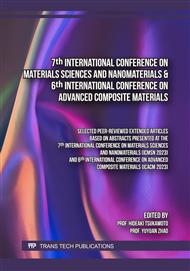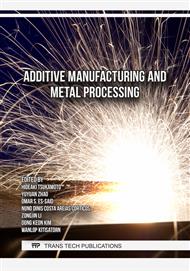p.49
p.59
p.65
p.73
p.79
p.87
p.93
p.101
p.107
Studying the Effects of Annealing on the Mechanical Properties and Microstructure of Ultrasonic Vibration Welds
Abstract:
The impact of heat treatment on the mechanical characteristics and microstructure of an ultrasonic vibration metal inert gas (MIG) weld is examined in this study. The findings show that the heat treatment method has a significant influence on the mechanical characteristics and structure of the welding specimens. The annealing will increase the grains’ size, thereby reducing the hardness and increasing the ductility of the joint. Due to the impact of ultrasonic during welding, the microstructure in fusion zone of both annealed and non-annealed specimens showed small and fine grain structure (with the grain size being measured at less than 40µm). The result also demonstrates that during annealing, the carbon tended to diffuse from the area of high density to the region of low density, resulting in a reduction in hardness compared to the initial sample. Also, it was discovered that elements that lower weld strength (such as the irregularity of the grain structure and the dendritic structure produced by metal crystallization) significantly decreased.
Info:
Periodical:
Pages:
79-84
Citation:
Online since:
December 2023
Authors:
Price:
Сopyright:
© 2023 Trans Tech Publications Ltd. All Rights Reserved
Share:
Citation:



